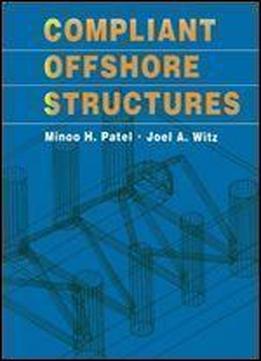
Compliant Offshore Structures
by Minoo H. Patel /
2013 / English / PDF
8.4 MB Download
Over the last two decades, exploitation of the United Kingdom's offshore oil and gas reserves has prompted a substantial level of research activity in marine technology. This work has been directed towards the devlopment of offshore structures designed to provide cost-effective platforms for operation in the hostile ocean environment found on the United Kingdom continental shelf. The close collaboration between technological development and practical application provides challenges for the engineers involved in both the background research and in the construction, installation and operation phases of development. It is hoped that the contents of this book will convey to the reader some of the more demanding technical problems that are being encountered and solved. The authors feel that it is timely that some of the developments in the analysis of compliant structures over the last two decades are brought together in a single text book. The book presents some aspects of the mechanics of compliant structures researched by one small group within the London Centre of Marine Technology. The first four chapters of the book present an account of the various conventional and newly emerging methods of hydrostatic and hydrodynamic analysis that are available for characterizing compliant marine structures. This is followed by the use of the analysis methods for a variety of conventional and novel compliant structures. The majority of the material presented in this book is concerned with analysis methods for determining the hydrostatic and hydrodynamic behaviour, at wave frequencies only, of conventional and novel compliant structure types. The contribution of hull configuration for tandem hull vessels and of pneumatic compliances for ship shaped and semisubmersible vessels has also been emphasized. This text is aimed at a range of readers from second and third year undergraduates in mechanical engineering as well as naval architecture and ocean engineering and postgraduates reading for masters' degrees and carrying out research.











